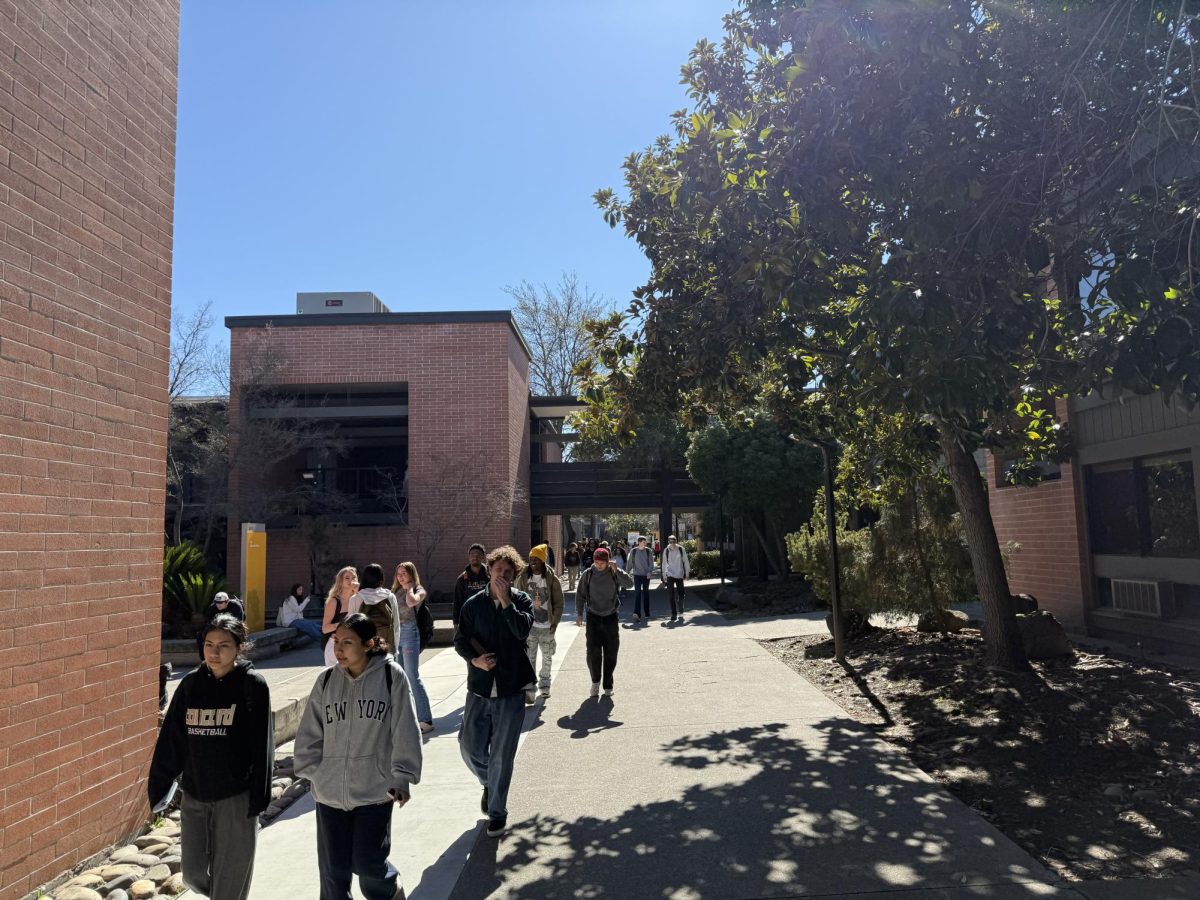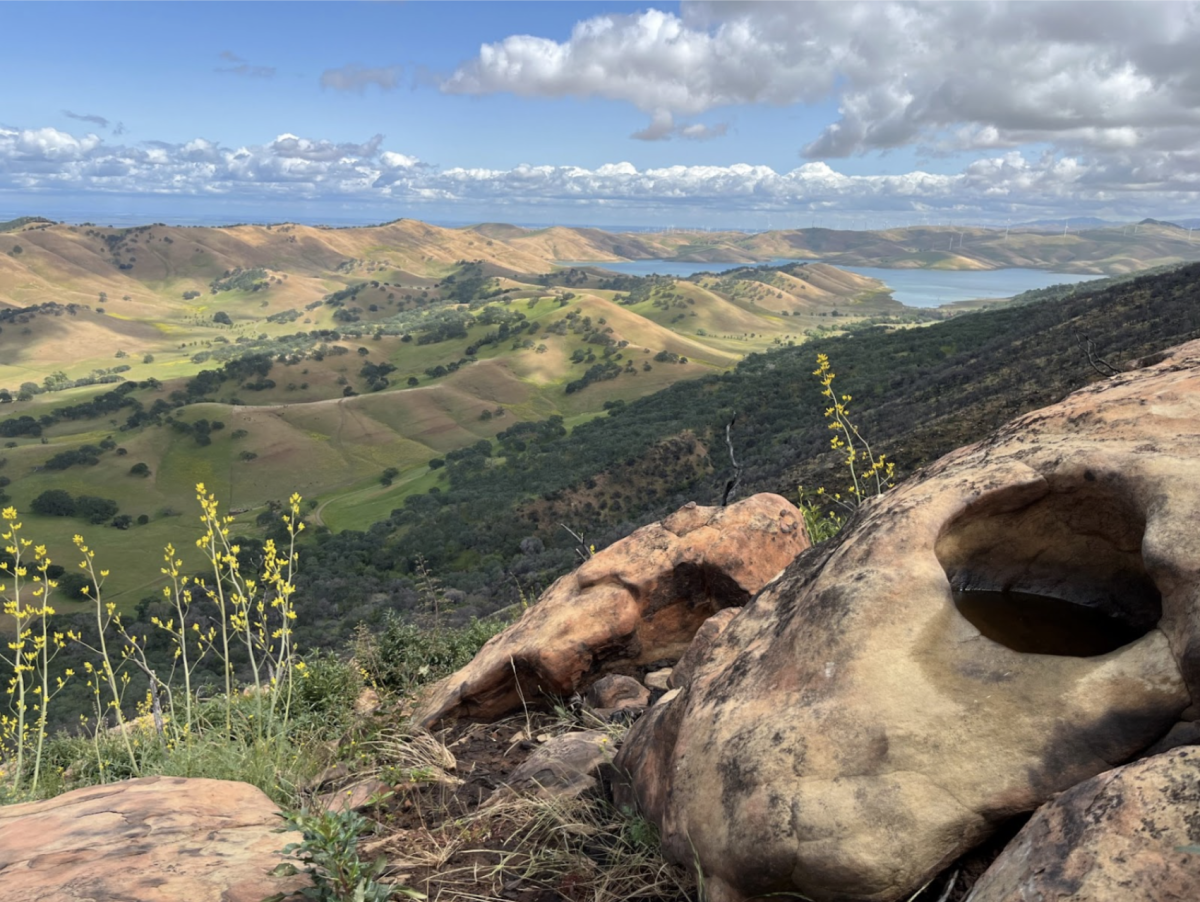After almost a century, and being brought to near extinction, the California Condor is finally seeing a rise in population. Now, this majestic bird is finding its way back into the full range of territories it formerly inhabited. Author Floyd McCluhan writes in a blog for Save Mt. Diablo, a nonprofit advocacy group, “the plight of the California condor began, unsurprisingly, because of human impacts. Lead poisoning, habitat destruction, pollution, poaching, and other factors all led to a dwindling population. The condor nearly went extinct.”
Yet while this particular rehabilitation story is one to celebrate, it points to the history of the Mt. Diablo region prior to colonization — and the long-lasting effects of colonization that still linger today.
Bev Ortiz, a Native American historian, writer and retired Cal State East Bay professor of anthropology, documents in one story of the condor: “a Southern Sierra Miwok creation account recorded mentioned Mount Diablo briefly…in this instance Condor’s roost on a ‘small hill’ located between the west bank of the river and the eastern foot of Mount Diablo. It was a rock on this hill that gave birth to Prairie Falcon-Man.”
The Condor is a metaphorical figure, as well, of a recent history of erasure. While we can find mention of it in Miwok accounts, we can also imagine the destruction of the bird’s habitat — along with the destruction of the Miwok peoples’ name for their land.
Diablo Valley College resides on ancestral inter-tribal lands, including the Muwekma Ohlone Tribe, East Bay Miwok, and Miwok to name a few. In the Muwekma Ohlone language of Chochenya, the name for Mt. Diablo is Tuyshtak, which translates to the dawn of time. According to DVC ethnic studies professor Dani Ahuicapahtzin Cornejo, “it is a place of one of the Ohlone creation stories.”
“When the Spanish were trying to conquer the Ohlone, the Ohlone were able to retreat up into Tuyshtak and they were able to hold their ground up on that sacred mountain,” said Cornejo, “which is why the Spanish called it El Monte Del Diablo.”
While this is just one tribal story about the mountain, historian Ortiz offers other origin stories for the contemporary meaning of Mt. Diablo in her work.
“The Nisenan at Auburn referred to Mount Diablo as ‘Dog Mountain’ because, according to Betty Castro, that’s where dogs came from in trade,” she said. Central to reimagining Mt. Diablo, Ortiz added, is to understand that calling it the devil is a colonized name — one that erases the valuable creation story of Tuyshtak.
In a recent interview, Sean Burke, who is Save Mt. Diablo’s land program director and a Cherokee Tribe and Intertribal Friendship House member, said, “we want to support tribes however we can, and we have to understand Mt. Diablo does not just have one name.”
Burke said all of the local tribes have their important, respective names for Mt. Diablo — none of them being Mt. Diablo.
“Mt. Diablo is a place that needs to be experienced and felt,” he said, which is why his organization is “reconnecting people back to the land so they can begin to heal, reconnect to earth, reconnect to relatives.”
As Burke put it: “Mt. Diablo is one of the most important places in 10,000 years of history.”
I have my own experience with the mountain. In the years I have spent hiking there, I have found healing when I was sick, clarity when I was confused, and meaning when I felt lost. The seasons are an ever changing evolution of Mt. Diablo, which is full of roaring waterfalls from winter to summer and the sweet fragrance of buckeye blossoms encouraging weary legs in the heat of the summer’s day. For the exploring botanist and flower enthusiast, the ephemeral fairy lantern emerges in the dark underbrush mid-summer. The swarming ladybugs can often be found mixed with moss and damp soil near the Waterfall Trail as early as December, and as late as August. For the fortunate and curious, the tarantulas begin searching for their mates at dusk, from August through November. They are big, hairy, and looking for love; leave them in peace.
Next time you visit the mountain, consider Burke’s words: “There is no such thing as coincidence when you are in a magical place. The mountain speaks loudly if your ears and heart are open.”
In one of my explorations on the historic east side of Mt. Diablo, called Morgan Territory, I came across an abundance of grinding holes near an open field which housed a ceremonial circle. Downstream the empty creak was dense with trees, one of which was curved toward the earth as if a vortex was pulling it away from the sun. It reminded me of the magic that resides within this rich soil.
When we look at Mt. Diablo today, we reimagine it as a sacred place: a mountain full of medicine, teeming with life and robust intertribal culture, with the renewed connection of the condors. Now we can acknowledge the land we are living on, and motivate our energy toward renaming it in a way that supports its vast and bountiful history, before the erasure enacted by settler colonization.
There have been attempts at changing the name of Mt. Diablo in the past. According to historian Beverly Lane, in 1850, “arguments over the diabolical nomenclature continued. In the 1860s, Congregational Church members began a campaign to remove the devil’s name from the mountain.”
“One churchman said that an old Indian told him the original Indian name for the mountain was ‘Kahwookum,’ meaning ‘Everywhere Seen.’ He contended that this name was far preferable to that of the devil. The ‘old Indian’ was never identified,” Lane wrote.
While the name change was voted out, the conflict illuminated why the ongoing and longstanding name of Mt. Diablo is not justified, nor dignified.
Last month, on Oct. 10, Dr. Vanessa Esquivido Hernandez gave a talk at DVC entitled “Black Lives Matter on Indigenous Land,” as a part of a Social Justice Speaker Series. In it, she offered a suggestion for students and staff about how they could honor the mountain.
“Just start calling it Tuyshtak Valley College,” Esquivido said. “Start putting it on flyers. Start putting it on t-shirts.”
The time to change Mt. Diablo’s name is now. The condor has returned to remind us of what is possible when we reconnect the broken pieces left in the wake of colonization. It is time to call Tuyshtak by its name.










































































Kurt Buckler • Aug 2, 2024 at 3:03 pm
I know the mountain had many names before receiving mount Diablo . I thought that Tuyshtak meant ” At the day ” maybe I am mistaken but I know one of the names given by tribes living in central ca. Is ” At the Day ” and this English translation is the perfect name for the mountain . To understand what I mean you have to say it out loud yourself . It has a very strange and beautiful sound when you say it . Try it say mount at the day. There are some very special reasons for this name and maybe later I will share them with you . But try it say mount at the day . It’s the most beautiful name ever given to a mountain and I don’t think you will get an argument from anyone to that speaks it..
vasanti Jayaswal • May 6, 2024 at 10:25 am
Mount Tuyshtak it should certainly be renamed. Calling it Mt. Diablo is an insult ! Indeed it is a sacred mountain for me even though I did not know that. My husband passed away peacefully in Antioch ending his four year bout with cancer. A trip or rather a pilgrimage I made to this mountain that I could see from my window. While on top I begged the native elder spirits that I knew might have lived there to take my husband. They did the next day. My son also prayed to them to release his father.
We ceremoniously as devised in Hindu rituals let loose his ashes in a small stream there.
There should be an All America movement to rename sacred sites.
Lily S • Nov 21, 2023 at 7:04 pm
Great article!
Olivia Vaino • Nov 17, 2023 at 9:38 pm
nice ?
Kevin T • Nov 17, 2023 at 12:39 pm
So true and good! Ringing in where we are and where we need to be going! I felt every word of this piece! BOH BOH REEEEESPECT!! Cheers and congratulations on this wonderful article!